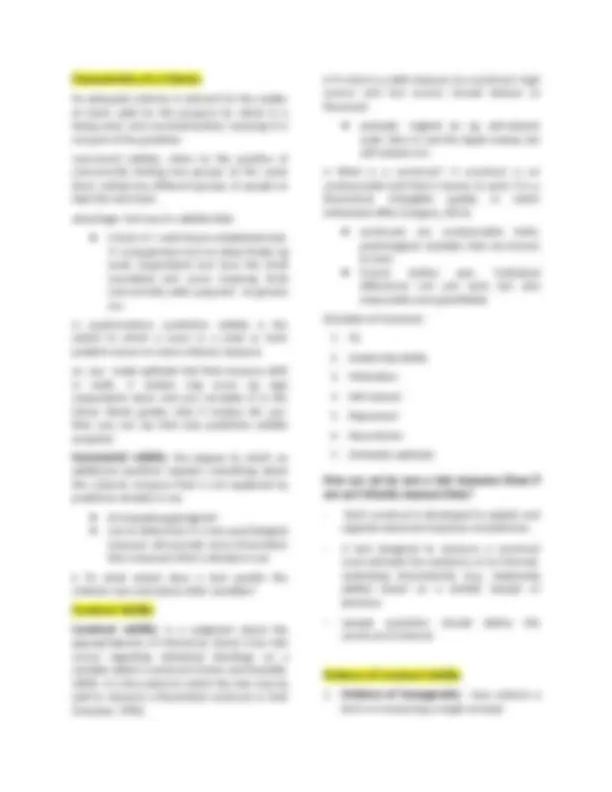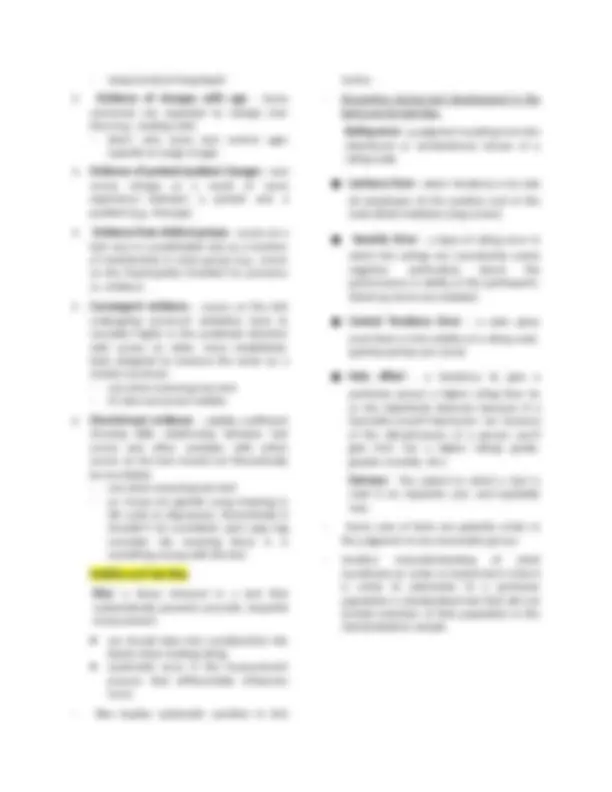




Study with the several resources on Docsity

Earn points by helping other students or get them with a premium plan


Prepare for your exams
Study with the several resources on Docsity

Earn points to download
Earn points by helping other students or get them with a premium plan
Community
Ask the community for help and clear up your study doubts
Discover the best universities in your country according to Docsity users
Free resources
Download our free guides on studying techniques, anxiety management strategies, and thesis advice from Docsity tutors
This document delves into the crucial aspects of reliability and validity in psychological assessment. We unravel the concept of validity, exploring what makes a test truly valid. From face validity and content validity to understanding the intricacies of test blueprints, it navigates the landscape of criterion-related validity. Dive into the characteristics of a criterion, discern the relationship between validity and test bias, and discover more key insights. Download this document to unravel the layers of validity to gain a comprehensive understanding of the reliability and effectiveness of psychological assessments.
Typology: Lecture notes
1 / 4

This page cannot be seen from the preview
Don't miss anything!



● The test should be reliable and valid ● On of the major concern is whether the tests measure what is purports to measure The concept of validity Validity: The validity of a test is the extent to which it measures what it claims to measure. It defines the meaning of test scores (Gregory, 2011). ● vital for a test to be valid in order for the results accurately applied and interpreted ● test use for interpreting ● accuracy of an assessments ● Remember that even if the test is reliable it may not provide avoid measures, also if the test is valid it is almost always reliable. ● a judgment based on the evidence about the appropriateness or inferences drawn from test scores ● the reason why we conduct tests, we get its validity and reliability is because no test is universally valid, (no true to all) Validity can be defined as the agreement between a test score or measure and the quality it is believed to measure. It is sometimes defined as the answer to the question, “Does the test measure what it is supposed to measure?” (Kaplan and Saccuzzo, 2011). ● that’s why gumagawa tayo ng norms and yung mga norms na yun inilalagay natin sa manual kung saan pwede lang natin siyang i-generalize Validation: the process of gathering and evaluating evidence about validity.
purports to measure “on the face of it,” it could be said to be high in face validity.